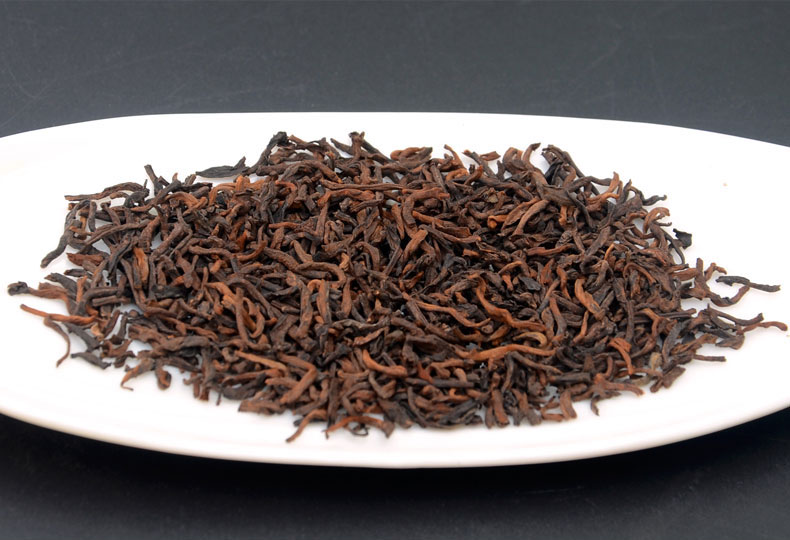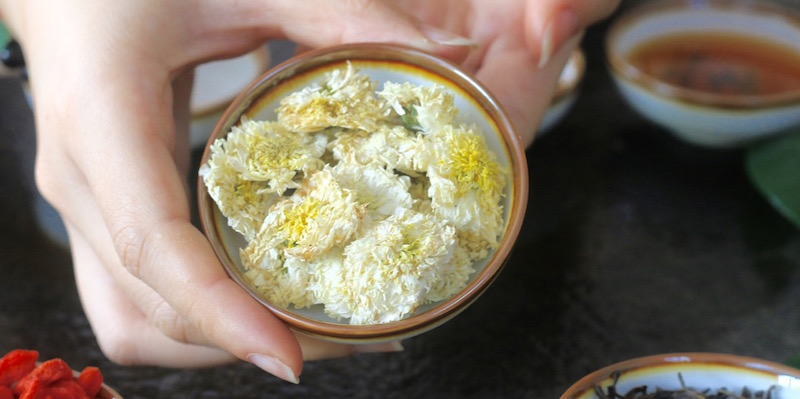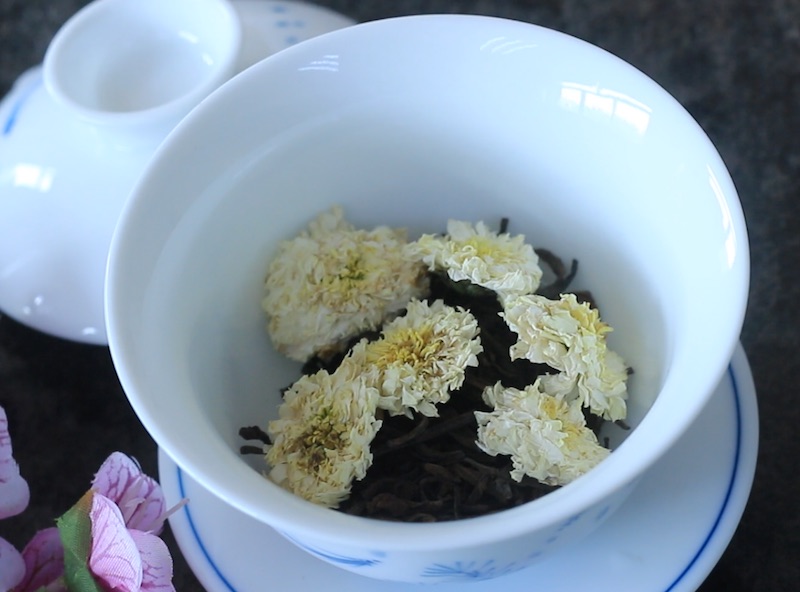While tea is mostly drank pure in China without any added ingredients or flavors, there are a few traditional Chinese tea blends that are highly popular. One of the most popular herbal blend is the Chrysanthemum pu erh tea, which simply consists of pu erh tea and dried Chrysanthemum flowers. As it's a perfect digestive tea, it's often served in restaurants (especially during Cantonese dim sum).
Before we proceed with the recipe and discuss the health benefits, let us first explain what pu erh tea and chrysanthemum flowers are:
What is pu erh tea?
Just like green and black tea, pu erh is in fact another type of leaf tea made from the same Camellia Sinensis tea plant. The classification is based on how the leaves are processed. Basically, green tea is minimally oxidized during production while black tea is fully oxidized. Pu erh tea is fully oxidized but also undergoes post-fermentation (aging) that results in a characteristically smooth flavor. Within this tea type there's raw and ripe pu erh, and the latter is used in this recipe.

What is chrysanthemum tea?
Besides leaf tea, there are also herbal teas (or tisanes) that are not made from the Camellia Sinenses plant. Often times, they're fruits, flowers or other types of plants that are dried and made suitable for an herbal infusion. The most popular herbal drink in China is one that's made from Chrysanthemum flowers. There are different types such as Chrysanthemum buds, Snow Chrysanthemum and white flower Chrysanthemum. The latter type is used in this recipe.

When combining both ingredients, you'll enjoy the smoothing and thick texture of ripe pu erh, while the earthiness is balanced with the flowery scent of chrysanthemum. This is the reason why this blend is likely the most popular throughout China.
Chrysanthemum Pu Erh Tea Recipe
This herbal tea blend can be made in several ways. Below you can see how to make it in a traditional Chinese tea cup that's called a gaiwan.

Here's what you'll need:
- 6 pieces of dried Chrysanthemum flowers
- 6 gram (0.2 oz) of loose leaf ripe pu erh tea
- Hot water at 100 °C or 212 °F
Steeping Instructions
- Teapot: 500 ml hot water per brew, good for 2 brews. Steeping time: 2 minutes for first brew, 3 minutes for second brew.
- Gaiwan: 120 ml hot water per brew, good for 6 brews. Steeping time: 30 seconds first two brew, then increase for further brews.
Love this Chrysanthemum tea blend? Then we recommend to also try our Chrysanthemum and Goji tea combination.
Where to Buy Pu Erh Tea & Chrysanthemum Tea?
While this herbal blend is easily available in Chinese restaurants, it's often not easy to find the ingredients required to make your own at home. Both ingredients should be available in local Chinese supermarkets. If not, feel free to order them from our online store. The ingredient list above contain links to the product page, so that you can conveniently order them starting from 15 grams.
The Chrysanthemum pu erh tea benefits is simply the combination of the individual ingredients. We'll discuss them separately below:
Chrysanthemum Tea Benefits, Side Effects & Caffeine
Benefits: This flower heb is often used in Chinese medicine to treat different external and internal health issues. The main benefits are that it improves eyesight, cardiovascular health, alleviates cold symptoms, and ease tension.
Side effects: There's not enough reliable research on side effects of Chrysanthemum flowers. Given this, it's better to avoid it during pregnancy and the breast-feeding period. Also avoid this flower tea when you're sensitive to other flowers, especially ones that are related such as: ragweed, marigolds, and daisies.
Caffeine: Chrysanthemum tea is caffeine free and therefore suitable for all day consumption. Preparation with pu erh, as in the recipe above, does result in caffeine content. Therefore, it's better to make and consume Chrysanthemum pu erh during day time.
Pu Erh Tea Benefits, Side Effects & Caffeine
Benefits: Pu erh tea shares many benefits of other tea types as it's also made from the Camellia Sinenses tea plant. Particular benefits include improving mental sharpness, reducing cholesterol levels and aiding digestion. The latter is interesting for those who want to loose weight. Thus, it's an ideal beverage to be part of a diet plan.
Side effects: The side effects of pu erh tea are mainly related to its caffeine content. For those sensitive to caffeine, drinking pu erh can result in irregular heartbeat, anxiety, and high blood pressure.
Caffeine: Pu erh tea does contain caffeine, though in lower amounts than an average cup of coffee.